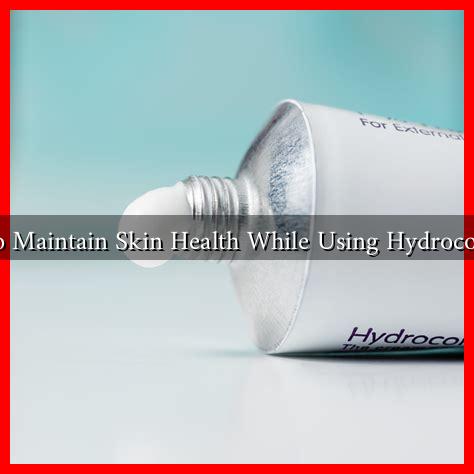-
Table of Contents
- How to Maintain Skin Health While Using Hydrocortisone
- Understanding Hydrocortisone and Its Effects
- Best Practices for Skin Care While Using Hydrocortisone
- 1. Use Hydrocortisone Sparingly
- 2. Follow Your Doctor’s Instructions
- 3. Moisturize Regularly
- 4. Avoid Irritants
- 5. Protect Your Skin from the Sun
- Case Studies and Statistics
- When to Seek Professional Help
- Conclusion
How to Maintain Skin Health While Using Hydrocortisone
Hydrocortisone is a topical corticosteroid commonly prescribed to treat various skin conditions, including eczema, psoriasis, and dermatitis. While it can effectively reduce inflammation and alleviate symptoms, prolonged use can lead to skin thinning and other side effects. Therefore, it is crucial to maintain skin health while using hydrocortisone. This article explores practical strategies to ensure your skin remains healthy and resilient during treatment.
Understanding Hydrocortisone and Its Effects
Hydrocortisone works by suppressing the immune response and reducing inflammation. While it can provide quick relief from itching and redness, its long-term use can lead to:
- Skin thinning (atrophy)
- Stretch marks (striae)
- Increased susceptibility to infections
- Changes in skin pigmentation
According to a study published in the Journal of Dermatological Treatment, patients using topical corticosteroids for extended periods reported a higher incidence of skin-related side effects. Therefore, it is essential to adopt strategies that mitigate these risks.
Best Practices for Skin Care While Using Hydrocortisone
To maintain skin health while using hydrocortisone, consider the following best practices:
1. Use Hydrocortisone Sparingly
Limit the use of hydrocortisone to the affected areas and avoid applying it to large skin surfaces. This approach minimizes the risk of systemic absorption and potential side effects.
2. Follow Your Doctor’s Instructions
Always adhere to your healthcare provider’s recommendations regarding dosage and duration of use. Regular follow-ups can help monitor your skin’s condition and adjust treatment as necessary.
3. Moisturize Regularly
Hydrocortisone can dry out the skin, making it essential to incorporate a good moisturizer into your routine. Look for products that are:
- Fragrance-free
- Hypoallergenic
- Rich in emollients (e.g., ceramides, glycerin)
Applying moisturizer immediately after using hydrocortisone can help lock in moisture and create a protective barrier.
4. Avoid Irritants
While using hydrocortisone, steer clear of products that can irritate your skin, such as:
- Harsh soaps and cleansers
- Exfoliants
- Fragrances and dyes
Opt for gentle, non-irritating products to maintain skin integrity.
5. Protect Your Skin from the Sun
Hydrocortisone can make your skin more sensitive to sunlight. Use a broad-spectrum sunscreen with an SPF of at least 30, and wear protective clothing when outdoors.
Case Studies and Statistics
A study conducted by the American Academy of Dermatology found that patients who combined hydrocortisone treatment with a consistent skincare regimen reported a 40% reduction in side effects compared to those who did not. This highlights the importance of a holistic approach to skin health during treatment.
When to Seek Professional Help
If you notice any adverse effects, such as severe skin thinning, persistent irritation, or signs of infection, consult your healthcare provider immediately. They may recommend alternative treatments or additional skincare strategies tailored to your needs.
Conclusion
Maintaining skin health while using hydrocortisone is essential for minimizing side effects and ensuring effective treatment. By using hydrocortisone sparingly, following medical advice, moisturizing regularly, avoiding irritants, and protecting your skin from the sun, you can promote healthier skin during your treatment journey. Remember, proactive skincare is key to achieving the best outcomes while managing your skin condition.

